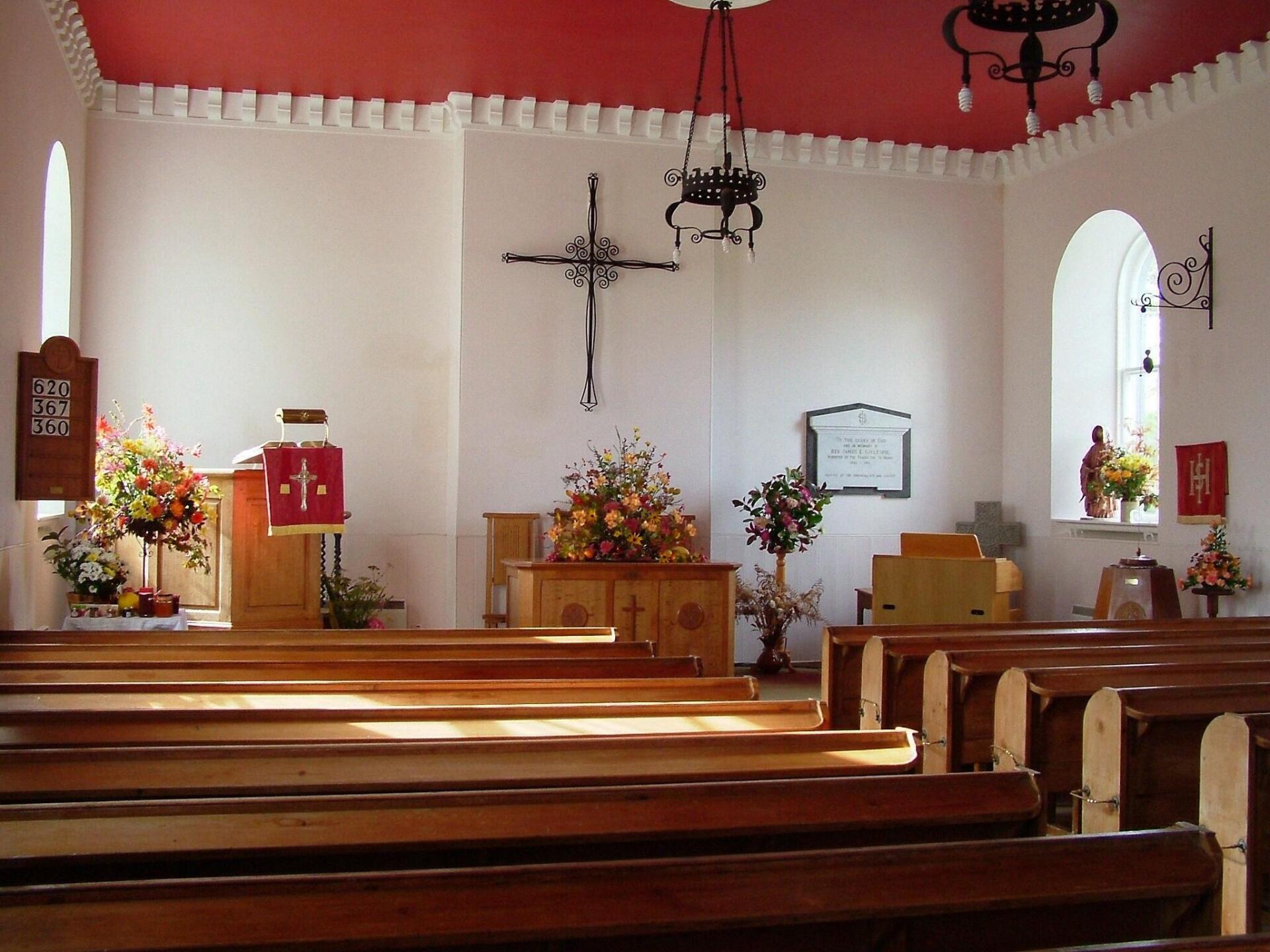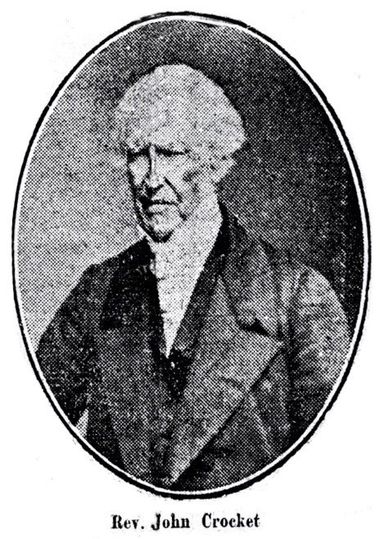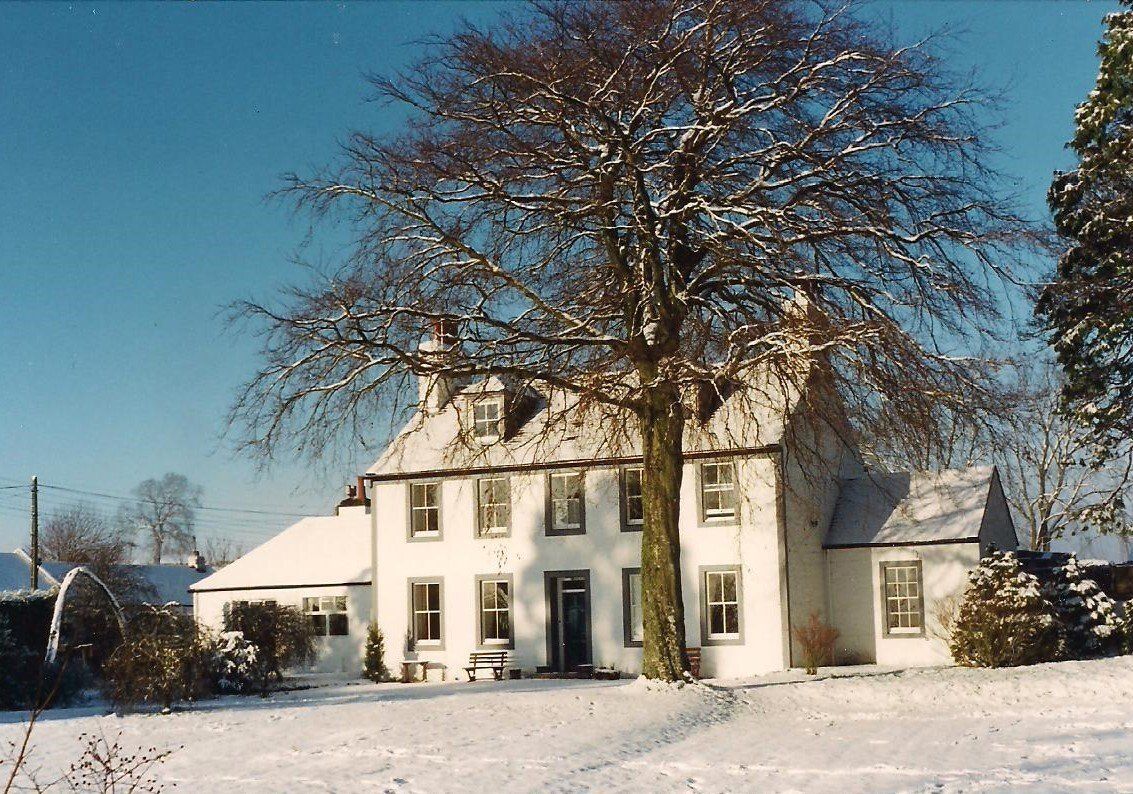Kirkgunzeon Parish Church
The Mediaeval Church
The present church stands on a site that has been a sacred place dating back to before the days of King David 1 of Scotland who reigned from 1124 to 1153. The present building opened in 1796 on the site of a former church. This was constructed sometime between 1160 when the lands of Kirkwinnyn were leased to monks of Holm Cultram Abbey in Cumberland by Uchtred, Lord of Galloway, and 1368 when it was granted to Sir John Herries.
This land consisted mainly of a sheep walk and a salt pan on the coast at a site to be chosen. The Abbey chose Colvend. This being outside the bounds, the monks had to pay £6 yearly to Uchtred. If the monks did not find the place to their liking in three years time their deposit of 10 Marks should be returned to them. The first Charter was granted between 1160 and 1174. After three years the monks decided to stay on. Between 1185 and 1186 the lease became a Feu of £10 a year. This grant of Kirkgunzeon was not so much a piece of munificence as business on the part of the Lords of Galloway. They rented the land to the monks, they did not give it.
Joceline, Bishop of Glasgow, confirmed the grants in 1190, with the Chapel of Kirkwinnin. He refers to "the place and Chapel in Galweia called Kyrkewinnin". This Chapel was dedicated to St Winnen or Winning. Nearby is St Winnian's Well, a spring which might earlier have been a pagan Holy Well. In 1207 Pope Innocent ratified the grant. St Winnen existed in the 8th Century. He is described in Pont's MS as a holy man who came from Ireland with disciples and taught the Gospel. In the Proprium Sanctorum he is said to have come from a noble Scottish family, where Kilwinning Parish, Ayrshire was named after him. The name of the church has had various spellings - Kirkgunguent and Kircwinnyn being found in some documents. In "The Place Names of Galloway" Kirkgunzeon derives from Cille Mo Fhainnein, or Killymingan, or Killiemingan, meaning "The Church of St Finnen" who is the Patron Saint of Kirkgunzeon. Finnen is the old Gaelic spelling of Winnen.
When Uchtred first brought the monks to Kirkgunzeon the ancient Celtic church was at its last gasp, and it is not known whether public worship was still maintained at Killiemingan. This Cistercian Abbey at Kirkgunzeon became a resting place for monks on pilgrimage to Whithorn, or on Abbey duties, once they had forded the Nith at Dumfries. In a letter from the Pope in 1222 to Walter, Bishop of Candida Casa (Whithorn), the Bishop of Glasgow was ordered to determine the status of the Parish, as to whether it was parochial under Glasgow. This could not be proved but the Bishop of Glasgow finally agreed that for the sake of religion he would permit the monks to hold the grange and the Chapel of St Winninus according to the consent of Bishop Jocelin.
In 1368 Sir John Herries was granted all the lands of Kirkgunyane which belonged to the Monastery of Holm Cultram. Herries was to compensate the monks, but it is doubtful if the monks ever saw any compensation. After the grant to Herries, the highly irregular position of Kirkgunzeon as an ecclesiastical entity came to an end and it became a definite parochial unit of the church. The church was now committed to lay men and served by priests. Worship, baptisms, marriages and burials continued throughout the following centuries in the Mediaeval Church. The Kirk Bell, cast in 1674, has on it the name Kirkwinong. This bell is still in place in the present building.
Rebuilding the Church
The Rev Richard Pocock, who became Bishop of Ossory, made a tour in Scotland in 1747. He speaks of "Caer Gunian" and a little old church with a round window in the east end and a cross in relief over the door. The kirk was 44 feet long and the "Queere" 20, with a width of 17 feet and an arch between. In the first Statistical Account of the Parish (1791) Rev Heron states that, “the roof is of a peculiar construction and is said to have been formed at Holmcultern in Cumberland and brought hither when the parish of Kirkgunzeon belonged to the Abbey.” This building was used as the Parish Church until the closing years of the 18th century, by which time it had deteriorated and was in a poor state of repair. The Presbytery agreed to visit Kirkgunzeon to see what could be done to improve the state of the building. After a conference they decided to rebuild the Church. Estimates were taken from different contractors whose names were found in the Presbytery books and the church was rebuilt, on the same site, by Robert Clark of Kirkgunzeon. Oak beams from the roof of the old church were reused as floor joists and the bell was retained, along with the oak pulpit and a communion table and minister’s chair. The final cost was £274.
The new Church opened for worship in 1796 during the Ministry of the Rev James Heron and it served as the Church of Scotland Parish church until 2013. It is a listed building (LB9677) and the exterior is described as having painted rubble walling with dressed margins to all openings and long and short quoins. It has 4-bay nave with round-arched windows, 8-pane glazing and gabled porches to west and east gables. There is a birdcage bellcote in red sandstone to the west gable, and it has a slate roof with flat skews. The interior was described as recast to a late 19th century seating plan with communion table and font of plain oak to west end. It contained an 18th century pulpit and had bracketed plaster cornice. Outwardly the Church changed little, however in 1957 some interior alterations were made and the church was redecorated. A new communion table and minister’s and elders’ chairs were presented by members of the congregation. The baptismal font was presented to the church in 1958 by Sir Alexander Knox Helm who was born at Congeith Farm in 1893. He went on to become a senior diplomat serving as ambassador to Turkey and the last Governor-General of the Sudan.
Church Ministers since 1702
| John Miller | 1702 -1747 |
|---|---|
| William Clark | 1747 - 1786 |
| James Heron | 1786 - 1802 |
| James Rae | 1802 – 1809 |
| John Crocket | 1809 – 1865 |
| Jas E Gillespie | 1865 – 1918 |
| John T Lornie | 1918 – 1923 |
| John W Baird | 1923 – 1925 |
| Robert L Hunter | 1926 – 1932 |
| Robert L Kirk | 1932 – 1956 |
| Samuel Aitkenhead | 1956 – 1959 |
| Roderick Petigrew | 1959 – 1987 |
| Interim Moderators | |
| James Morrison | 1988 – 1989 |
| R Christopher Irving | 1990 – 1994 |
| Robert Hamill | 1995 – 1996 |
| Rachael Dobbie | May – Aug 1996 |
| John R Miller | 1996 – 2006 |
| Robert C Wotherspoon | 2006 – 2009 |
| Maureen M Duncan | 2009 - 2013 |
Two ministers are notable for the length of their service in the parish, Rev Crocket who served for 58 years and his assistant, then successor, Rev Gillespie who served for 53. Both ministers lived in the manse and are buried in the
Churchyard. Rev Crocket’s lived to be 89 and he was the author of the second statistical account of the parish in 1844
view 2nd Statistical Account. An account of his life can be
viewed here. ‘A more acceptable minister, a more genial, hospitable, and generous hearted man did not exist.’ He was known for his prodigious memory, for being a crack shot and for his enjoyment of parishioner’s hospitality.
Rev Gillespie also wrote an account of the parish published in the Transactions and Journal of Dumfriesshire and Galloway Natural History and Antiquarian Society in 1912. This account can be viewed here. In Catherine Little’s account ‘Kirkgunzeon Past and Present’ (1965) she describes Rev Gillespie as esteemed and respected, for many years known as ‘Father’ of the Presbytery of Dumfries. He served as Presbytery clerk and within the parish was a chair of the Schoolboard and trustee of Maxwell Memorial Hall. There is a memorial tablet to Rev Gillespie in the West wall of the Churchyard.
Church Closure
Latterly the Church of Scotland Presbytery of Dumfries and Kikcudbright decided to unite Kirkgunzeon parish with Dalbeattie, with services no longer taking place in Kirkgunzeon Church. The last service was held in Kirkgunzeon in October 2013. The church was then sold and is undergoing conversion to form a dwelling. The wrought iron cross, designed by Archie Sutter-Watt and made by Robert Smith, son of the village blacksmith now has a place in the Church in Dalbeattie, along with the ministers chair which is used by the Minister at weekly services. Several of the pews from the church found homes throughout the community and the Communion table, which was presented by Mr & Mrs George Little of Drumcoltran, was returned to the family. The Elders’ chairs, which were presented by Mrs Christine Pettigrew and Mrs Betty Clark (now Young), were returned to them and the Baptismal Font was also returned to Sir Alexander Knox Helm’s family.
Further reading: Daphne Brooke (1994) Wild Men and Holy Places
R.C. Reid (1927) ‘The Early Ecclesiastical History of Kirkgunzean’ in Transactions and Proceedings of Dumfriesshire and Galloway Natural History and Antiquarian Society 1926-28 Third series Vol XIV.
The Manse
In his account of 1791 Rev Heron states the Manse had been build about 40 years ago and was in a decent state of repair, although a new Manse (the present building) was built in 1804. A pair of whale's jaw bones given to Rev Heron by Captain Crosby of Kipp and these stood in the Manse garden until 2001. They can be seen in the picture below. The manse is also a listed building (LB9676). In 1956, on the retiral of Rev. R L Kirk after a ministry of 23 years, the church was linked to Dalbeattie Park Church and its minister, the Rev. S M Aitkenhead, assumed responsibility for both.
As he lived in Park Church Manse, Kirkgunzeon Manse was sold by the Church of Scotland in 1957 and became a dwelling which was initially named Rowanglen. It was occupied by the Frazer family and part of the house served as village Post Office. This transferred across the road to the cottages now named Rowanglen when the family moved there. The Manse was then renamed Mansepark.








